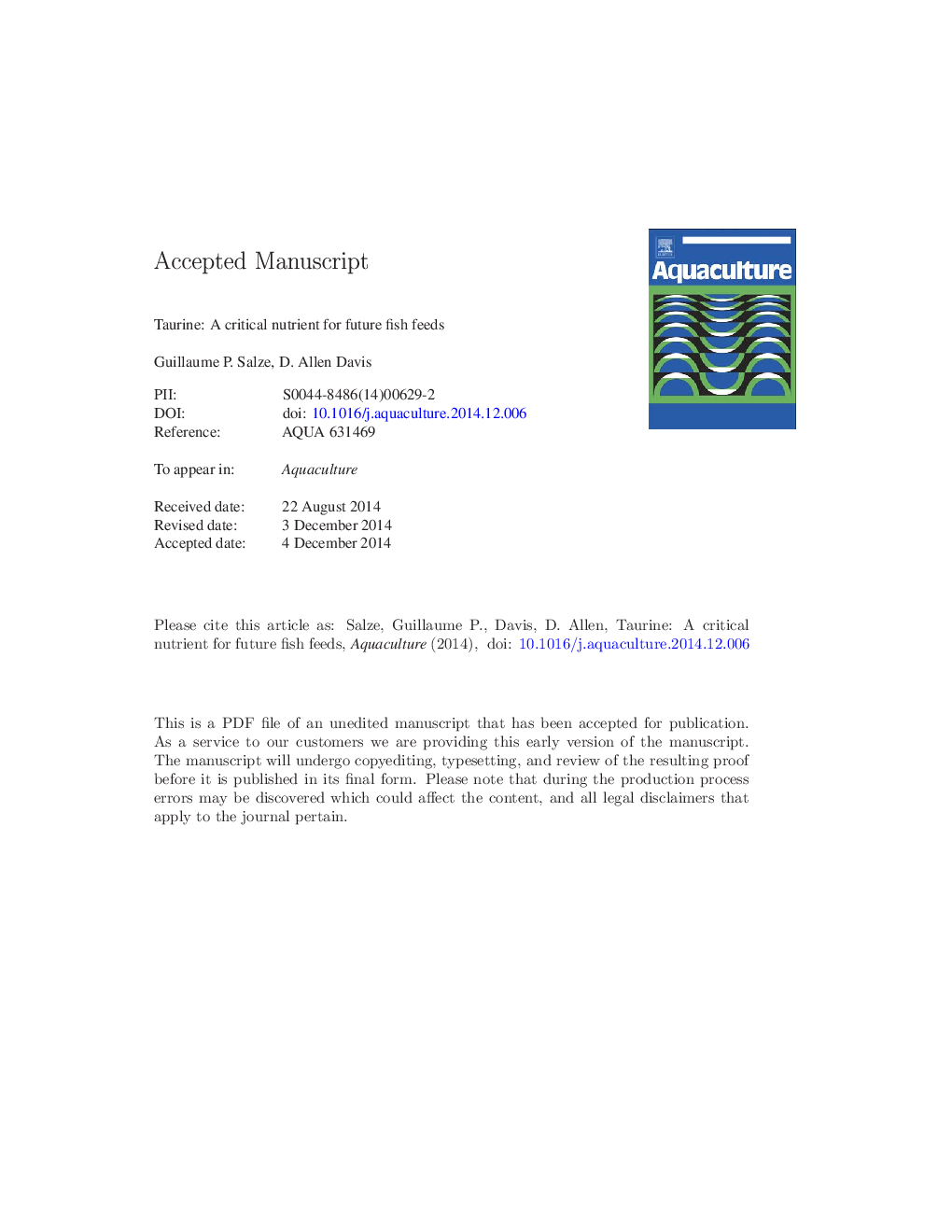| Article ID | Journal | Published Year | Pages | File Type |
|---|---|---|---|---|
| 8494718 | Aquaculture | 2015 | 66 Pages |
Abstract
Taurine is a sulfonic acid found in high concentrations in animal tissues. In recent years, a number of studies have demonstrated the essentiality of dietary taurine for many commercially relevant species, especially marine teleosts. Consequently, the removal of taurine-rich dietary ingredients such as fishmeal may create a deficiency, of which symptoms include reduced growth and survival, increased susceptibility to diseases, and impaired larval development. These symptoms emphasize the systemic role of taurine in the animal's physiology and provide few clues as to the underlying mechanisms of taurine function. In fact, a myriad of roles have been attributed to taurine in mammals, ranging from bile salt conjugation to membrane stabilization, osmoregulation, anti-oxidation, immunomodulation, calcium-signaling, and neuroprotection. This review describes the current knowledge of taurine physiology and metabolism in fish and requirement levels in relevant species, and highlights possible parallels with mammalian taurine metabolism. In addition, the effects of ingredient processing and feed manufacturing on taurine bioavailability are discussed. Finally, regulatory aspects are brought to the forefront: although the supplementation of taurine will be necessary to further reduce the use of ingredients such as fishmeal, taurine is not currently approved by the FDA in the USA for fish feeds. Obtaining approval in the United States to utilize taurine in fish feeds can improve the environmental and economic sustainability of fish feeds nation-wide.
Related Topics
Life Sciences
Agricultural and Biological Sciences
Aquatic Science
Authors
Guillaume P. Salze, D. Allen Davis,
